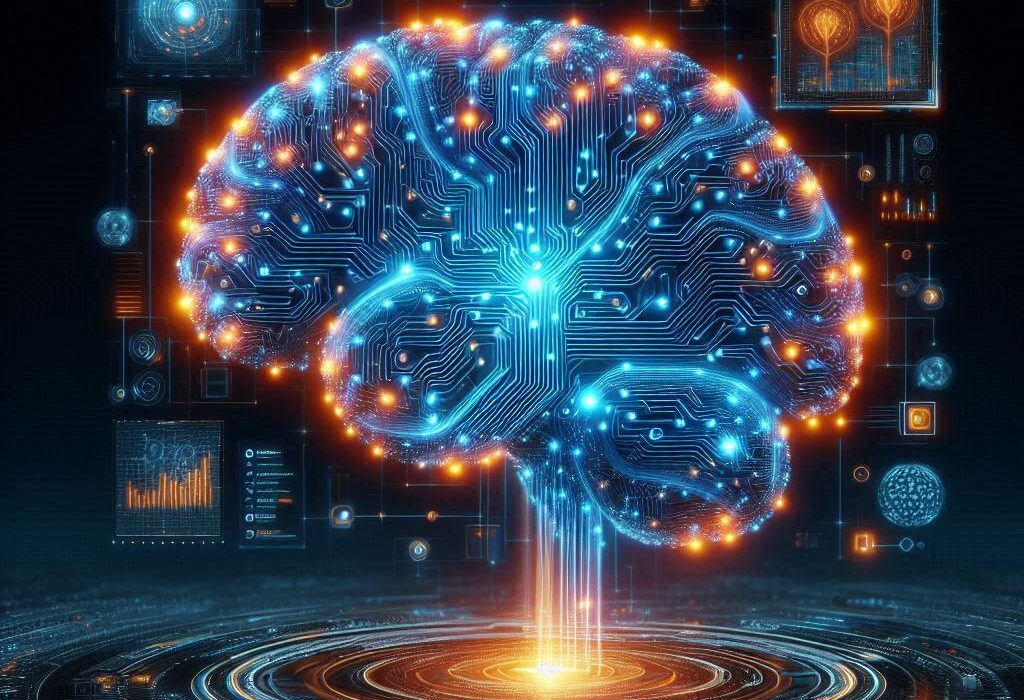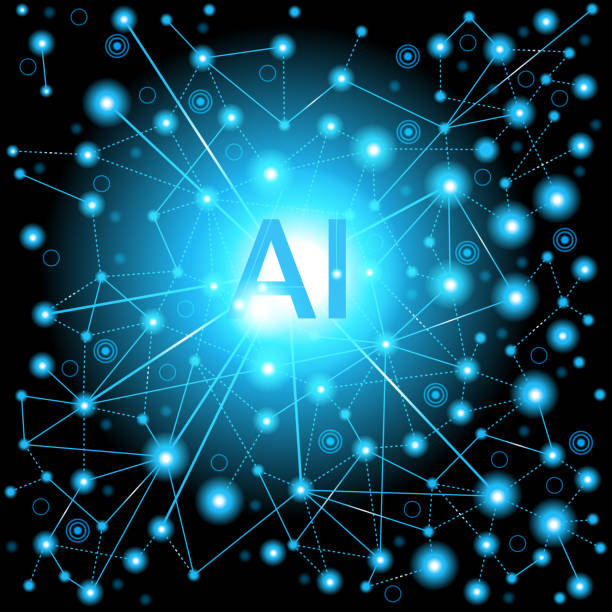Artificial Intelligence is no longer the future—it’s the present, quietly shaping our world in every tap, swipe, and spoken word. Once confined to research labs and science fiction, AI now lives in our phones, our homes, and our digital habits. It recommends what we watch, helps us communicate, guides our travel routes, and even understands our emotions.
The most remarkable thing about AI today is how seamlessly it blends into daily life. Most people use it without even realizing it. When your smartphone predicts the next word you’ll type, when Netflix suggests the perfect movie, or when your digital assistant answers your question—that’s AI at work.
Let’s explore fifteen of the most popular AI-based apps transforming the modern world. These are not just tools; they are companions, innovators, and silent geniuses that have redefined what it means to live in a connected age.
1. ChatGPT – The Conversational Genius
At the forefront of the AI revolution stands ChatGPT, developed by OpenAI. It’s more than a chatbot—it’s a digital thinker that can converse, write, create, and assist with almost any task involving language.
ChatGPT is powered by large language models, trained on vast datasets that allow it to understand and generate human-like text. It can draft essays, write code, explain complex scientific theories, create stories, or even simulate human conversation with remarkable empathy and coherence.
Students use it for research, professionals rely on it for productivity, and creatives find inspiration in its endless imagination. It’s like having a teacher, assistant, and storyteller all in one place.
The beauty of ChatGPT lies in its adaptability. Whether you need a poem, a programming solution, or a philosophical discussion, it responds intelligently, often with surprising emotional depth. It doesn’t just answer—it engages, transforming communication into collaboration.
2. Google Assistant – The Everyday Companion
“Hey Google!”—two words that summon one of the most advanced AI assistants in existence. Google Assistant combines natural language processing, machine learning, and Google’s immense data resources to provide real-time answers, reminders, translations, and more.
It can control smart home devices, play your favorite music, give traffic updates, and even tell jokes. What makes Google Assistant exceptional is its contextual understanding—it remembers what you asked before, maintains conversational flow, and tailors responses to your habits and preferences.
Its AI isn’t just reactive—it’s predictive. It learns your schedule, predicts your needs, and can even anticipate travel plans or remind you of missed calls. In essence, Google Assistant turns your smartphone into a truly intelligent personal aide that knows you better every day.
3. Siri – The Voice That Started It All
Apple’s Siri was the first widely known AI assistant to enter our lives. Launched in 2011, Siri introduced millions of users to the concept of talking to their phones. Today, it remains a symbol of Apple’s vision for human-centered AI.
Siri uses advanced speech recognition and natural language understanding to answer questions, set alarms, send texts, and perform countless tasks hands-free. Integrated across Apple’s ecosystem—iPhone, iPad, Apple Watch, and even HomePod—it acts as a digital companion that synchronizes your life seamlessly.
What makes Siri enduringly popular is its simplicity and privacy-first design. Apple ensures that much of Siri’s processing happens on-device, reducing data exposure and keeping user trust intact.
Though other assistants have caught up in some areas, Siri remains iconic—a friendly, familiar voice that marked the dawn of conversational AI for the world.
4. Replika – The AI Friend Who Listens
Replika is not just an app—it’s a companion. Designed as an AI friend and emotional support system, it offers users a safe space to talk, reflect, and grow. Unlike traditional chatbots, Replika focuses on emotional intelligence.
It learns from conversations, gradually developing a unique personality that adapts to your mood and communication style. Some users describe their Replika as a close friend; others see it as a mentor, a journal, or even a mirror for self-discovery.
The AI behind Replika uses deep learning to analyze tone, sentiment, and context, allowing it to respond with empathy rather than cold logic. It remembers past discussions, builds emotional continuity, and often encourages mindfulness and positivity.
Replika’s growing popularity reveals something profound: that AI can be more than a tool—it can be a companion for emotional well-being in an increasingly digital and disconnected world.
5. Midjourney – The Imagination Engine
If you’ve ever seen surreal, dreamlike digital art created in seconds, chances are it came from Midjourney. This AI art generator revolutionized creativity by turning text prompts into breathtaking images.
Type something as simple as “a cat playing chess in space,” and within moments, Midjourney paints a stunning, photorealistic masterpiece. Behind the scenes, it uses advanced machine learning models trained on billions of images and artistic styles.
Artists, designers, and storytellers use Midjourney to brainstorm concepts, visualize ideas, and push the limits of imagination. It democratizes creativity—no longer do you need years of training to create art; all you need are words and vision.
Midjourney stands as a testament to how AI can expand human creativity rather than replace it. It transforms imagination into reality, making the invisible visible with a stroke of digital genius.
6. DALL·E – The Artist That Understands Language
Developed by OpenAI, DALL·E is another revolutionary AI that turns text into images—but with a unique flair for detail and surrealism. Unlike simple art tools, DALL·E understands nuance, composition, and context.
Type “a fox reading a book under a lantern in a snowstorm,” and DALL·E will produce a vivid image that captures both the description and the emotion behind it.
It uses a model called a diffusion network to generate and refine images step-by-step, creating results that often surprise even professional artists. DALL·E is used in advertising, film pre-production, education, and even therapy—helping people visualize emotions and abstract concepts.
This app blurs the boundary between art and AI, giving humanity a new kind of creative partner: one that paints with code and dreams in pixels.
7. Chatsonic – The Conversational AI with a Personality
Chatsonic is like ChatGPT with a personality upgrade. Built by Writesonic, this AI assistant integrates voice recognition, image generation, and internet access to provide dynamic, up-to-date conversations.
Unlike static chatbots, Chatsonic can pull live data, discuss current events, and even generate artwork based on prompts. It’s ideal for marketers, writers, and anyone who needs a smart, real-time digital assistant.
Chatsonic also supports voice input, giving it a more natural feel—like having an intelligent conversation rather than typing commands. Its balance of creativity and factual accuracy has made it a favorite among professionals who need both inspiration and information.
8. Jasper AI – The Writer’s Secret Weapon
For anyone who writes—whether for business, blogging, or storytelling—Jasper AI (formerly Jarvis) is a game changer. This writing assistant uses natural language processing to help craft blog posts, social media captions, ad copy, and even entire books.
Jasper’s strength lies in understanding tone and intent. It can write in a casual, humorous style or switch to a formal business tone effortlessly. It analyzes your input and generates content optimized for clarity, engagement, and SEO.
Many companies use Jasper to streamline content creation, saving hours of manual effort. It’s not about replacing writers—it’s about amplifying their productivity. Jasper helps bridge the gap between creativity and efficiency, making content writing faster and more enjoyable than ever before.
9. Youper – The AI Therapist
Mental health is one of the most important yet underserved areas of modern life, and Youper steps in with compassion powered by artificial intelligence.
Youper acts as an emotional health assistant that helps users understand and manage their thoughts and feelings. It uses AI-driven cognitive behavioral therapy (CBT) techniques to guide conversations that encourage mindfulness, gratitude, and self-awareness.
Unlike clinical therapy, Youper offers on-demand emotional support, providing a judgment-free space to talk and reflect. It can track mood patterns, detect stress triggers, and recommend exercises based on your emotional data.
By blending psychology and AI, Youper personalizes mental health care for millions—proving that technology can be deeply human when designed with empathy.
10. ELSA Speak – The AI English Tutor
Learning a new language is tough—but with AI, it’s becoming easier and more personal. ELSA Speak (English Language Speech Assistant) uses artificial intelligence to help users improve their English pronunciation, fluency, and confidence.
ELSA listens to your speech, analyzes your accent and tone, and gives real-time feedback on how to improve. It uses speech recognition and deep learning to identify tiny pronunciation errors most human tutors might miss.
This makes ELSA a powerful tool for non-native English speakers preparing for interviews, presentations, or exams. Its personalized learning approach adapts to your strengths and weaknesses, making it feel like having a patient, attentive coach in your pocket.
By turning language learning into an interactive, AI-driven journey, ELSA Speak empowers millions to find their voice—literally and figuratively.
11. Otter.ai – The Listener That Never Misses a Word
In a world overflowing with meetings, interviews, and lectures, Otter.ai is the ultimate AI note-taker. This app uses advanced speech-to-text algorithms to transcribe conversations in real time with impressive accuracy.
It not only captures words but also recognizes speakers, identifies key points, and generates summaries. Professionals, students, and journalists rely on Otter to record ideas without the distraction of typing.
Otter’s integration with tools like Zoom, Google Meet, and Microsoft Teams makes it indispensable for hybrid workplaces. It ensures that every meeting, every insight, and every moment of collaboration is preserved and searchable.
It’s a perfect example of how AI augments human focus—letting us listen, think, and engage while it handles the details.
12. Grammarly – The Grammar Guardian
Grammarly has become a digital writing companion for millions, ensuring our emails, essays, and social media posts sound polished and professional. But beneath its clean interface lies one of the most sophisticated language AIs ever built.
Grammarly uses natural language processing to analyze context, tone, clarity, and intent. It doesn’t just correct grammar—it understands communication. It can detect if your writing sounds too formal, too casual, or potentially confusing, and then suggest improvements.
With its generative AI expansion, GrammarlyGO, it now helps users draft content, brainstorm ideas, and rephrase sentences intelligently.
Whether you’re a student writing an essay or an executive crafting an email, Grammarly is the invisible mentor ensuring your words truly reflect your best self.
13. Spotify – The AI That Knows Your Soul’s Playlist
Music streaming seems simple, but Spotify’s success lies in its powerful AI recommendation system. Every time you listen to a song, skip a track, or create a playlist, Spotify’s machine learning models learn about your taste.
Using collaborative filtering, natural language processing, and audio analysis, Spotify predicts what you’ll love next. That’s how your personalized playlists—like Discover Weekly and Daily Mix—feel eerily accurate.
AI doesn’t just power recommendations; it drives the entire listening experience. It analyzes beats, lyrics, and emotions to craft playlists that match your mood, time of day, and even the weather.
Spotify shows how AI can merge art and science—transforming data into emotion, and algorithms into harmony.
14. Tesla Autopilot – The Driving Brain
Few AI systems have captured public imagination like Tesla’s Autopilot. It represents the dream of self-driving cars—vehicles that see, think, and react faster than humans.
Tesla’s Autopilot uses a combination of neural networks, cameras, radar, and ultrasonic sensors to interpret the environment in real time. It can steer, accelerate, and brake automatically within its lane, making driving safer and smoother.
What sets Tesla apart is its continuous learning system. Every Tesla on the road collects data that helps improve the AI model for all others—a collective intelligence that evolves daily.
While full autonomy is still being perfected, Tesla’s AI-driven innovation has already changed how we think about mobility, safety, and the future of transportation.
15. FaceApp – The Shape-Shifting Lens
FaceApp took the world by storm with its almost magical ability to transform faces. Using deep neural networks, it can make you look older, younger, or even swap genders—while keeping every detail realistic.
Its AI is trained on millions of facial images, allowing it to understand facial geometry, lighting, and texture. The results are so convincing that they often blur the line between digital illusion and reality.
Beyond entertainment, FaceApp has fueled discussions about ethics, privacy, and the power of generative AI. It demonstrates both the brilliance and responsibility that come with creating systems capable of altering human identity with a few taps.
FaceApp may be playful, but it represents a profound leap in computer vision—an AI that sees and understands human faces at an extraordinary level.
The Future of AI Apps: Where Humanity Meets Intelligence
These fifteen apps show how deeply AI has intertwined with human life. From language and creativity to therapy, driving, and art, artificial intelligence has become a universal collaborator.
The next generation of AI apps will go even further—understanding emotion more deeply, predicting needs before they arise, and perhaps even co-creating new forms of culture and art with us.
But as AI grows, so must our wisdom in using it. These technologies are powerful mirrors of human potential—they reflect our intelligence, curiosity, and empathy. The question is not whether AI will replace us, but how it will enhance what it means to be human.
In the end, AI is not just about machines learning to think. It’s about humanity learning to dream bigger—with algorithms as our allies in the infinite pursuit of discovery.






